Key takeaways
- Sony camera sensors utilize back-illuminated technology for improved low-light performance and image quality.
- Regular sensor cleaning is crucial to avoid issues with dust, which can cause dark spots in photos.
- Utilizing proper cleaning tools, such as blowers and lint-free gloves, enhances the safety and effectiveness of the cleaning process.
- Establishing a routine for sensor checks and cleanings helps maintain image quality over time, especially in varying shooting environments.
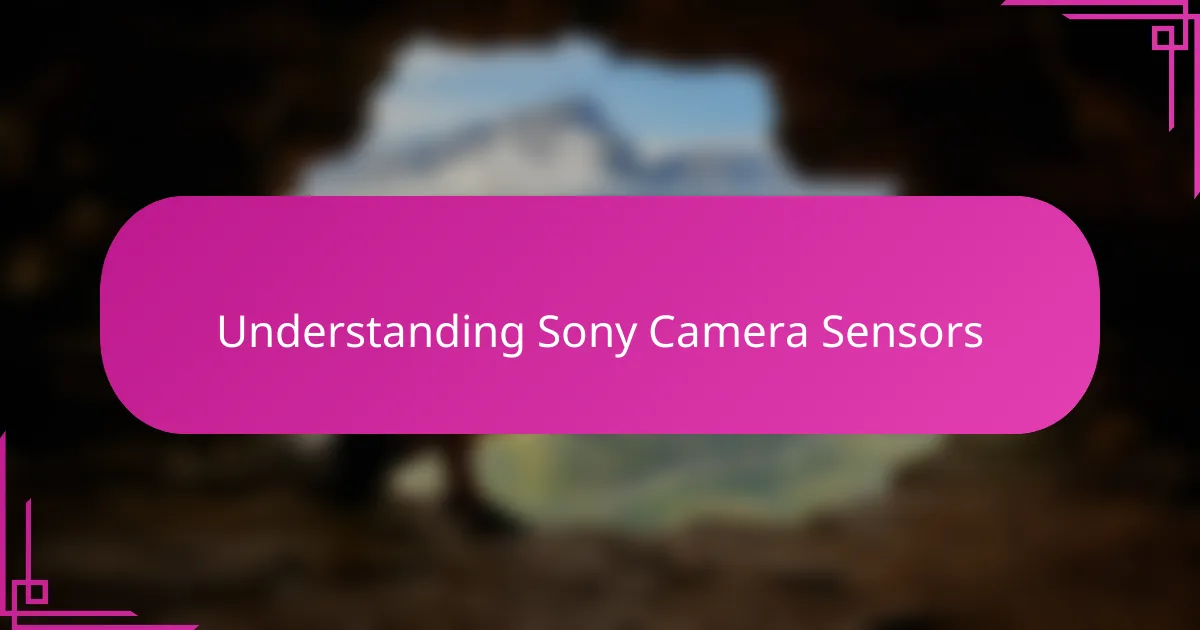
Understanding Sony Camera Sensors
Sony camera sensors are marvels of modern technology, capturing light with incredible precision to produce stunning images. I remember when I first handled a Sony mirrorless camera and was amazed at how the sensor’s design directly impacted the sharpness and color accuracy of my photos. Have you ever paused to think about the tiny silicon chip working behind the scenes to translate light into those vibrant images we love?
From my experience, Sony sensors stand out because of their back-illuminated structure, which means they gather more light even in tricky low-light situations. This feature once saved a concert shoot I was struggling with—allowing me to capture crisp, detailed shots without resorting to heavy artificial lighting. Understanding this technical edge helps me appreciate why sensor cleaning is so critical; even the slightest speck of dust can interfere with such sensitive equipment.
It’s fascinating how each sensor is essentially the heart of your camera, isn’t it? Maintaining it properly means respecting this core component, which directly influences your photography’s quality. Often, I reflect on how a clean sensor translates to cleaner, more professional images, reaffirming my habit of regular, careful maintenance.
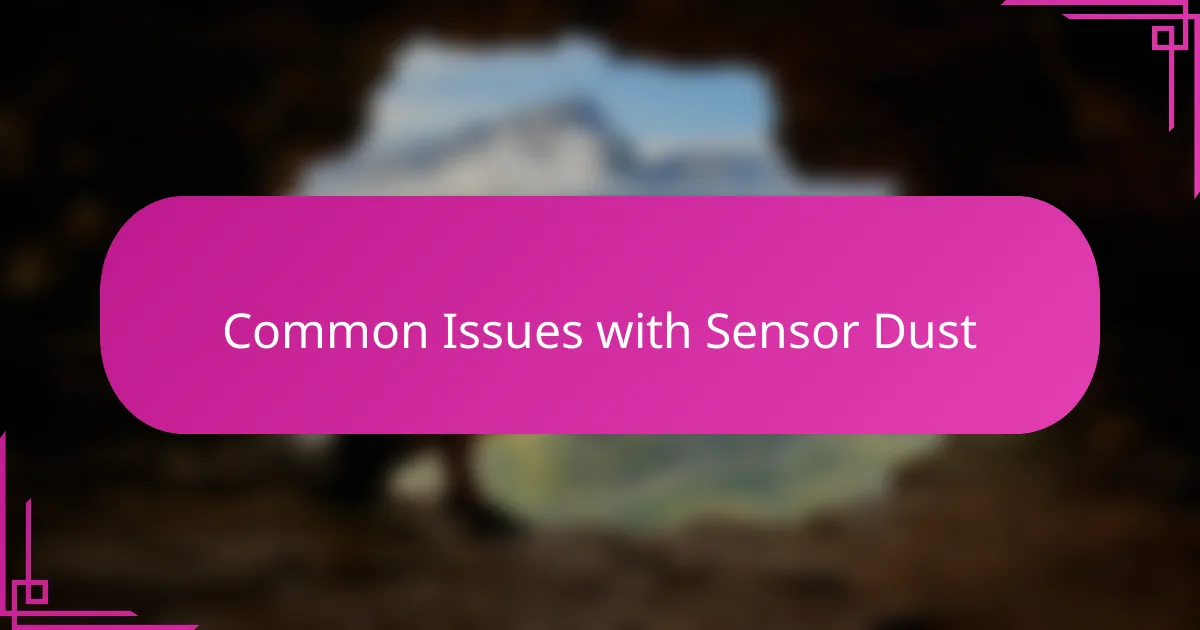
Common Issues with Sensor Dust
Dust on a sensor might seem like a tiny problem, but trust me, its effect is far from small. I’ve noticed how a tiny speck can create distracting dark spots on my photos, especially against smooth or bright backgrounds. Have you ever been stumped by mysterious blemishes that show up no matter how much you edit? That’s usually the sensor dust playing tricks.
What’s frustrating is that dust doesn’t always reveal itself in every shot. I’ve taken multiple photos and only upon close inspection did I realize the stubborn particles were lurking in specific apertures or shutter speeds. It’s like an annoying little secret contaminating your work, one that only cleaning can fully solve. This inconsistency can really test your patience and sharp eye.
Another issue I’ve encountered is how dust can accumulate over time despite careful handling. It’s tempting to think “I’m careful, so my sensor will stay clean,” but the truth is, dust inevitably finds its way inside. The challenge then becomes how often to clean without risking damage, which is a balance I’m still refining through trial and experience.
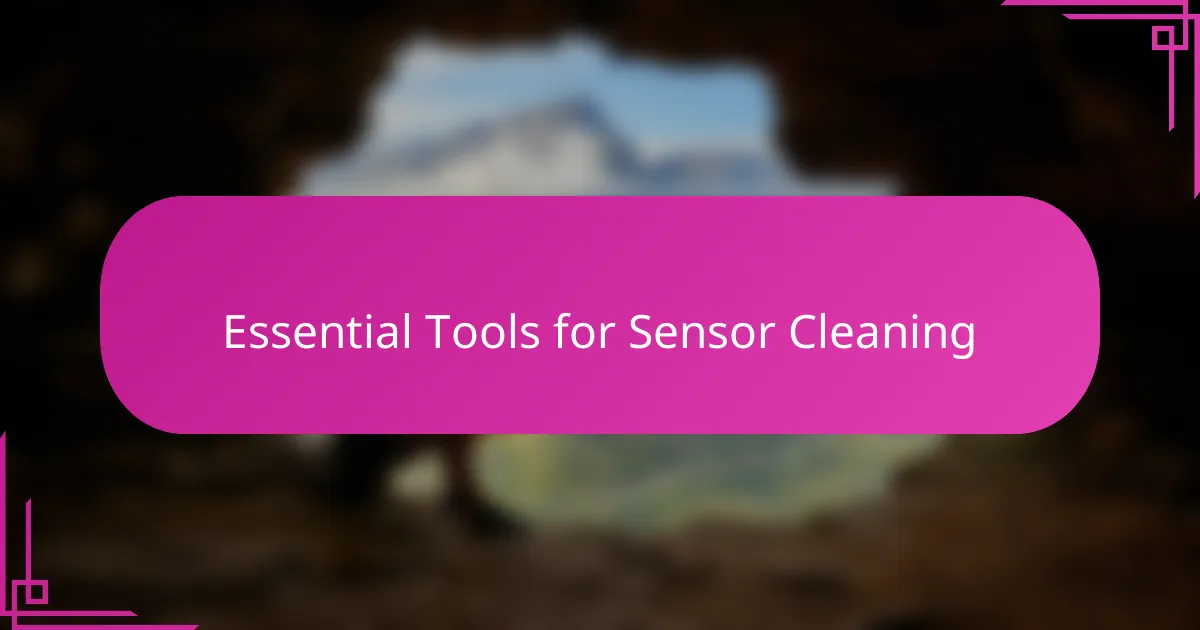
Essential Tools for Sensor Cleaning
When it comes to cleaning my Sony sensor, I never skip the basics like a good quality blower. It’s remarkable how a few gentle puffs of air can dislodge stubborn bits of dust without ever touching the delicate surface. Have you tried using a blower instead of canned air? From what I’ve learned, the blower is far safer and more controllable.
I also keep a set of sensor swabs and a specially formulated cleaning solution close at hand. At first, I was hesitant about using liquids on such a sensitive component, but finding the right products changed my perspective completely. Let me tell you, when used correctly, these tools make the difference between a risky scrub and a precise clean that preserves image quality.
Then there’s the magnifying loupe—my secret weapon for spotting every tiny particle before and after cleaning. I can’t count how many times it saved me from overlooking dust that my [censured] eye missed. It makes me wonder, how many photographers skip this step and end up with less-than-perfect images? Having the right tools really turns cleaning from a chore into a manageable, even satisfying routine.
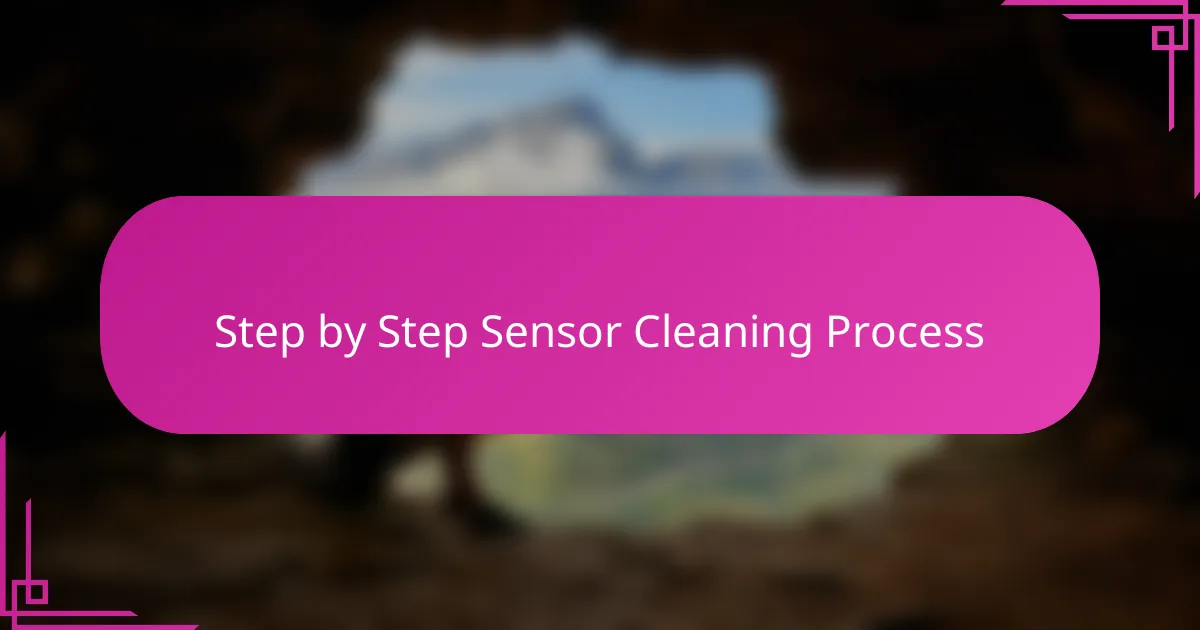
Step by Step Sensor Cleaning Process
The first step I take in cleaning my Sony sensor is activating the camera’s built-in sensor cleaning mode. This ensures the sensor is exposed and ready for cleaning without any obstruction. Have you ever tried skipping this step? From my experience, it’s a recipe for frustration—imagine struggling to reach dust spots hiding beneath the mirror or shutter.
Next, I use my trusty blower to gently remove loose dust particles. I believe in starting with the least invasive method, as it feels like giving the sensor a gentle breeze rather than a scrub. Sometimes, a few gentle puffs reveal that the sensor was actually cleaner than I thought, saving me unnecessary hassle.
If stubborn spots remain, I reach for my sensor swabs and cleaning solution, applying them with slow, careful strokes. This part always makes me nervous—I think about how delicate that sensor is and how one wrong move could affect image quality. But after following the process several times, it’s become almost meditative, and I trust the results every time. Have you found a similar rhythm when handling sensitive gear?
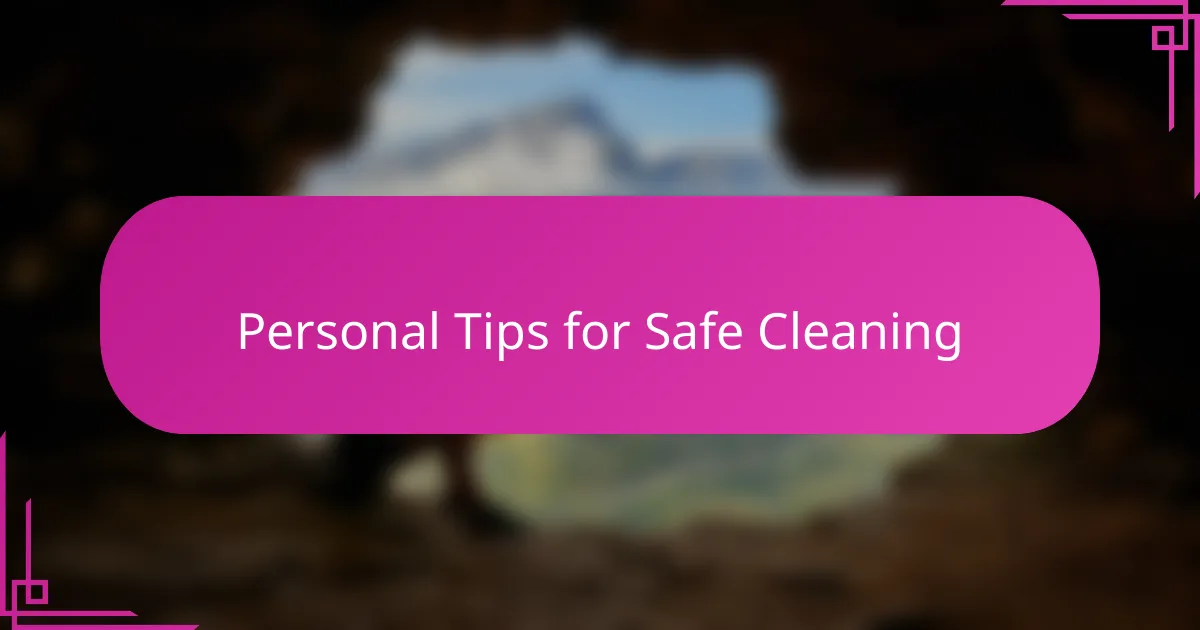
Personal Tips for Safe Cleaning
When I started cleaning my Sony sensors, I quickly learned that haste is the enemy. Have you ever felt that tempting urge to rush and just get it over with? From my experience, taking my time and using gentle motions helped me avoid any accidental scratches or damage. It’s like handling a fragile piece of art—you want to be mindful and respectful.
Another tip I swear by is working in a clean, dust-free environment. Early on, I tried cleaning in a busy room only to realize I was battling dust in the air as much as on the sensor. Setting up near a window on a windless day or using a clean, static-free cloth nearby makes a huge difference. Have you noticed how even a tiny breeze can undo all your careful cleaning efforts? I certainly have.
Lastly, I never skip wearing lint-free gloves during cleaning. At first, it felt like overkill, but my fingers leave natural oils that can cause smudges or attract more dust later on. Does it feel a bit cumbersome? Sure, but the peace of mind it brings is well worth that small inconvenience. It’s one of those small habits that, over time, makes sensor cleaning safer and more effective.
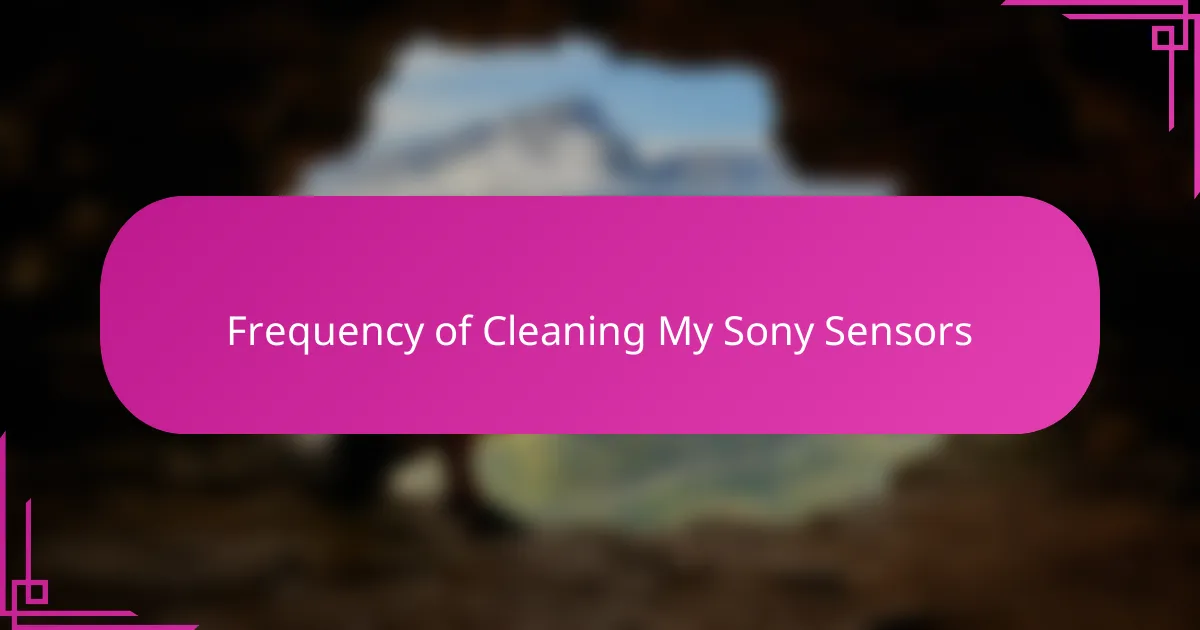
Frequency of Cleaning My Sony Sensors
I tend to clean my Sony sensor every couple of months, but honestly, it really depends on how often I change lenses or shoot in dusty environments. Have you ever noticed that feeling when you spot a speck in your photos and wonder if it’s time for a cleanup? That moment always pushes me to check my sensor sooner rather than later.
Sometimes, when I’m doing back-to-back shoots or traveling, I find myself cleaning more frequently—maybe every few weeks. It might sound like overkill, but trust me, catching dust early saves a lot of frustration later. Have you ever had to spend hours editing out spots that a little sensor care could’ve prevented? I certainly have.
On the flip side, during extended indoor studio work, I can stretch the cleaning interval longer since the environment is usually cleaner. But even then, I like to peek at my sensor through a loupe every now and then. It’s a small habit that keeps me confident my gear is performing at its best. Why wait for visible dust when a proactive check can keep your images flawless?
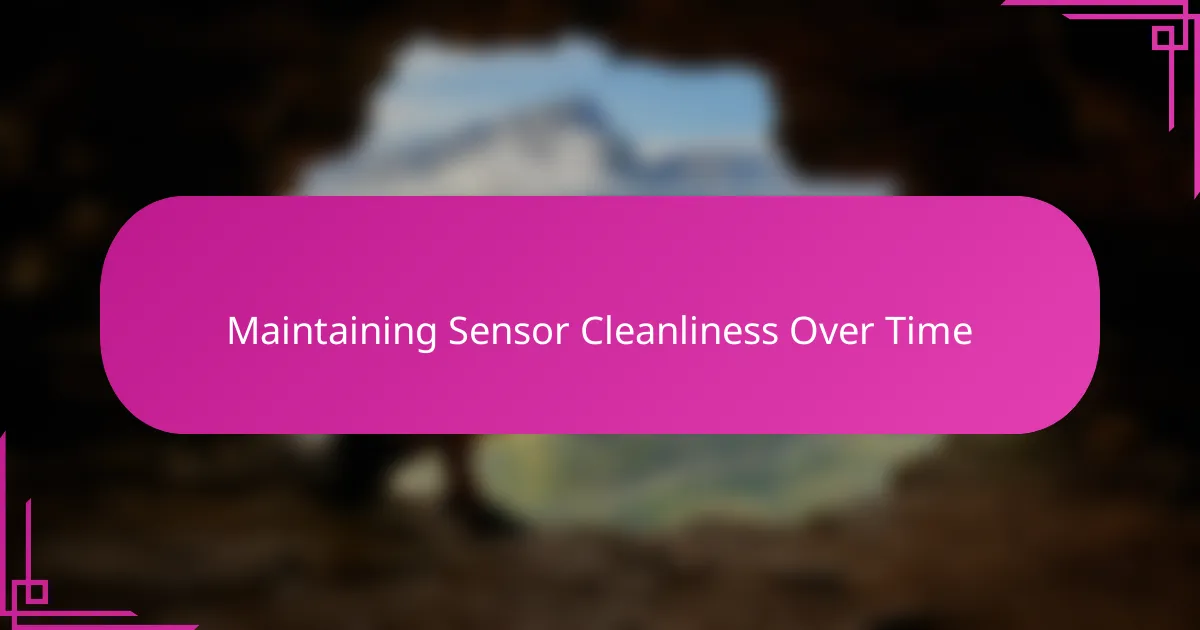
Maintaining Sensor Cleanliness Over Time
Keeping your Sony sensor clean over time feels like an ongoing commitment, but it’s one I’ve gladly taken on. I’ve learned that regular checks—even if everything looks fine—help catch dust before it becomes a real problem. Have you ever noticed how that tiny spot seems invisible one day and suddenly ruins a perfect shot the next? That’s why I make sensor inspection part of my routine.
I also try to minimize lens changes in dusty places because every swap is an invitation for particles to sneak in. It’s a small habit, but it goes a long way in reducing buildup. From my experience, it’s better to prevent contamination than constantly clean afterward. Do you find yourself being cautious about lens swaps too, or is it just me being a bit obsessive?
Over time, I’ve realized that consistency beats occasional intense cleanings. A gentle blow with my blower after each shoot often keeps the sensor happier than infrequent, aggressive scrubs. It’s like caring for any delicate equipment—you treat it kindly, and it rewards you. Have you found a rhythm in your sensor maintenance that makes the process feel less like a chore?